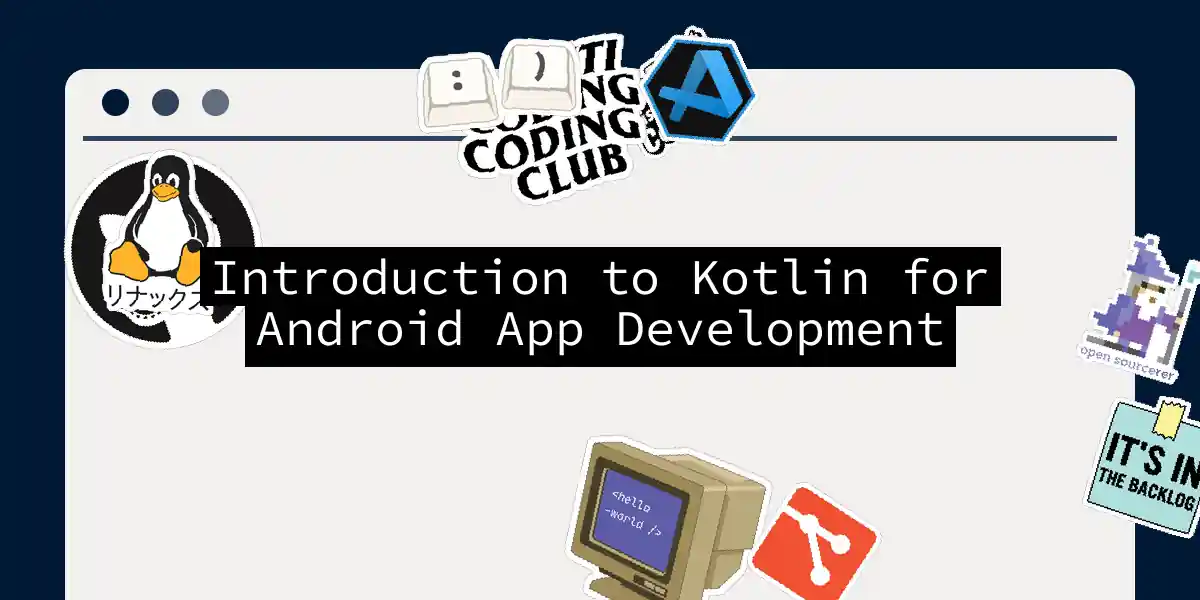Introduction to Kotlin
Kotlin has become the go-to language for Android development since Google I/O in 2019, with over 50% of professional Android developers using it as their primary language[1]. Its popularity stems from its concise syntax, enhanced safety features, and seamless integration with Android Studio. Kotlin’s modern language features allow developers to write less boilerplate code, reducing the time spent on coding and debugging[3].
Why Kotlin?
- Concise Code: Kotlin requires less code compared to Java, making it easier to read and maintain.
- Safer Code: Kotlin’s type system helps avoid common errors like NullPointerExceptions, making apps 20% less likely to crash[1][3].
- Interoperability with Java: You can easily integrate Kotlin into existing Java projects without needing a full migration[1].
- Easy Learning: Kotlin is particularly easy for Java developers to learn, thanks to its similarity in syntax and structure[1].
Setting Up Kotlin for Android Development
To start developing Android apps with Kotlin, you’ll need:
- Android Studio: This is the recommended IDE for Android development. It provides excellent support for Kotlin, including tools to convert Java code to Kotlin[3].
- Kotlin Plugin: Although Android Studio supports Kotlin out of the box, ensuring the Kotlin plugin is updated is essential for the latest features.
- Jetpack Compose: This modern UI toolkit is built on Kotlin, allowing for efficient and intuitive UI development[3].
Basic Kotlin Syntax
Kotlin’s syntax is designed to be more concise and expressive than Java. Here’s a simple example of a “Hello, World!” program in Kotlin:
fun main() {
println("Hello, World!")
}
Key Kotlin Features
- Null Safety: Kotlin’s type system is designed to eliminate NullPointerExceptions by distinguishing between nullable and non-nullable references.
- Coroutines: Kotlin provides built-in support for coroutines, making asynchronous programming easier and more efficient.
- Extension Functions: You can extend existing classes with new functionality without modifying their source code.
Building Your First Android App with Kotlin
Let’s create a simple “Dice Roller” app to get started with Android development using Kotlin.
Step 1: Create a New Project
- Open Android Studio and select “Start a new Android Studio project.”
- Choose “Empty Activity” and click Next.
- Name your project (e.g., “DiceRoller”) and select Kotlin as the language.
Step 2: Design the UI
In the activity_main.xml file, add a Button and a TextView:
<?xml version="1.0" encoding="utf-8"?>
<LinearLayout xmlns:android="http://schemas.android.com/apk/res/android"
xmlns:app="http://schemas.android.com/apk/res-auto"
android:layout_width="match_parent"
android:layout_height="match_parent"
android:orientation="vertical">
<Button
android:id="@+id/rollButton"
android:layout_width="wrap_content"
android:layout_height="wrap_content"
android:text="Roll Dice" />
<TextView
android:id="@+id/resultTextView"
android:layout_width="wrap_content"
android:layout_height="wrap_content" />
</LinearLayout>
Step 3: Implement the Logic
In the MainActivity.kt file, add the logic to roll a dice when the button is clicked:
import androidx.appcompat.app.AppCompatActivity
import android.os.Bundle
import android.view.View
import android.widget.Button
import android.widget.TextView
import kotlin.random.Random
class MainActivity : AppCompatActivity() {
private lateinit var rollButton: Button
private lateinit var resultTextView: TextView
override fun onCreate(savedInstanceState: Bundle?) {
super.onCreate(savedInstanceState)
setContentView(R.layout.activity_main)
rollButton = findViewById(R.id.rollButton)
resultTextView = findViewById(R.id.resultTextView)
rollButton.setOnClickListener {
val rollResult = Random.nextInt(1, 7)
resultTextView.text = "You rolled a $rollResult"
}
}
}
Advanced Kotlin Features for Android
Coroutines
Coroutines are a powerful tool in Kotlin for handling asynchronous operations. Here’s how you can use them to fetch data from the internet:
import kotlinx.coroutines.*
fun fetchData() = CoroutineScope(Dispatchers.IO).launch {
// Simulate fetching data from the internet
delay(1000)
withContext(Dispatchers.Main) {
// Update UI here
}
}
Jetpack Compose
Jetpack Compose is a modern UI toolkit for Android that simplifies UI development. Here’s a simple example of a Composable function:
import androidx.compose.foundation.layout.Column
import androidx.compose.foundation.layout.padding
import androidx.compose.material.Button
import androidx.compose.material.Text
import androidx.compose.runtime.Composable
import androidx.compose.ui.Modifier
import androidx.compose.ui.tooling.preview.Preview
import androidx.compose.ui.unit.dp
@Composable
fun Greeting(name: String) {
Column(modifier = Modifier.padding(16.dp)) {
Text(text = "Hello, $name!")
Button(onClick = { /* Handle click */ }) {
Text("Click me")
}
}
}
@Preview
@Composable
fun PreviewGreeting() {
Greeting("Android")
}
Sequence Diagram for App Navigation
Here’s a sequence diagram illustrating how navigation works between fragments in an Android app:
Conclusion
Kotlin offers a robust and efficient way to develop Android apps, with its concise syntax, safety features, and seamless integration with Android Studio. By mastering Kotlin, developers can create high-quality apps faster and with fewer errors. Whether you’re a seasoned developer or just starting out, Kotlin is an excellent choice for Android development.
Additional Resources
For further learning, consider exploring courses like “Developing Android Apps with Kotlin” on Udacity[2] or “Android App Development with Kotlin” on Udemy[4]. These resources provide comprehensive guides to building Android apps with Kotlin, covering everything from basic syntax to advanced app architecture.
